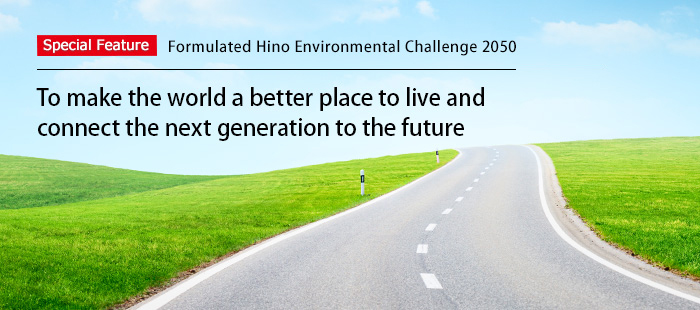Special Feature:To make the world a better place to live and connect the next generation to the future
» Print (PDF 1.6MB)
Background and Concept of the Hino Environmental Challenge 2050
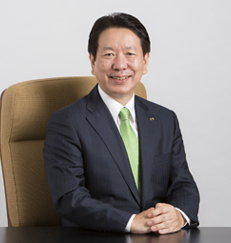
Based on its mission, "to make the world a better place to live by helping people and goods get to where they need to go—safely, economically and with environmental responsibility—while focusing on sustainable development," Hino Motors has supported customers’ businesses and contributed to society through the manufacture and sales of commercial vehicles, including trucks and buses.
Trucks and buses that we provide impact the environment in every aspect of its product life cycle, from making parts and materials used in vehicles to vehicle manufacture, use, and disposal. Therefore, we formulated the Hino Environmental Challenge 2050 as a goal for all Hino Group companies to challenge in order to fully reduce their environmental impact, and make the world a better place to live and connect the next generation to the future.
The Hino Environmental Challenge 2050 has set very high goals, including the New Vehicle Zero CO2 Emissions Challenge, in every process of the Hino Group’s business. The Group will work as one to revolutionize logistics through the technical innovation of products, manufacturing innovation at production sites, and IoT technologies. Hino Motors will take on the new challenge of becoming an environmentally advanced company.
To make the world a better place to live and connect the next generation to the future, Hino Motors will continue to be an environmental frontrunner.
Digest Animation : Formulated Hino Environmental Challenge 2050
- To make the world a better place to live and connect the next generation to the future -
The following six items are the targets in the Hino Environmental Challenge 2050.
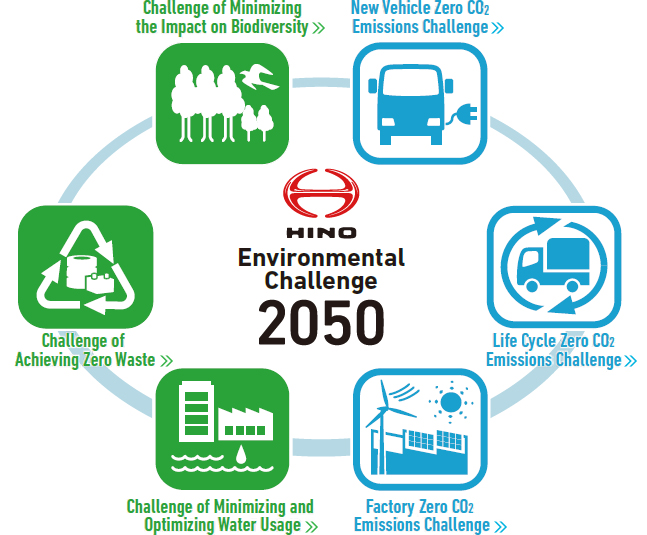
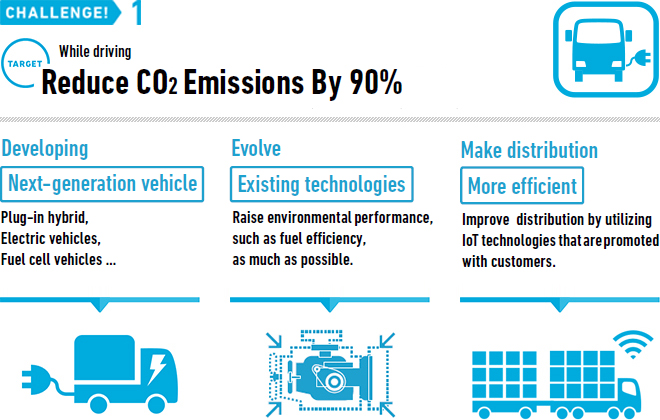
New Vehicle Zero CO2 Emissions Challenge
Against the backdrop of increasing global warming, it was agreed at the 21st session of the Conference of the Parties (COP 21) to the United Framework Convention on Climate Change to keep the temperature rise under two degrees compared to the time before the industrial revolution.
This goal is necessary for reducing the CO2 emissions that are one of the contributors to global warming.
Hino Motors will take on the challenge of reducing CO2 emissions during vehicle operation, which accounts for about 90% of CO2 emissions in the truck and bus life cycle.
Therefore, Hino Motors will take on the challenge of raising environmental performance, such as fuel efficiency, as much as possible, while raising the distribution efficiency of trucks.
Developing new vehicle for next-generation
-Next-generation vehicle development-
Hino Motors will improve product environmental technologies and develop next-generation vehicles including plug-in hybrid vehicles (PHV), electric vehicles (EV), and fuel cell vehicles (FCV). Concurrently, the Company will collaborate with governments and other related organizations and play a role in their spread.


-Evolution of existing technologies-
Hino Motors will further raise fuel efficiency of diesel (DE) and hybrid vehicles (HV), efficiently recover the energy generated during braking , and improve aerodynamic performance of the products.

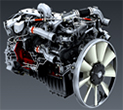
Make distribution more efficient
Hino Motors will help improve waste and inconsistency in collaboration with customers by incorporating IoT technologies in vehicles and enabling the “visualization of distribution.”
Above all, Hino Motors recommends using heavy-duty trucks in mainline transport where long-distance distribution is the norm and using light-duty trucks in urban areas.
In addition, the company will promote technological development so that it can offer logistics matching, which properly manages information on trucks that are in or out of operation. In addition, the company will reduce product CO2 emissions by offering logistics matching, which properly manages information on trucks that are in or out of operation.

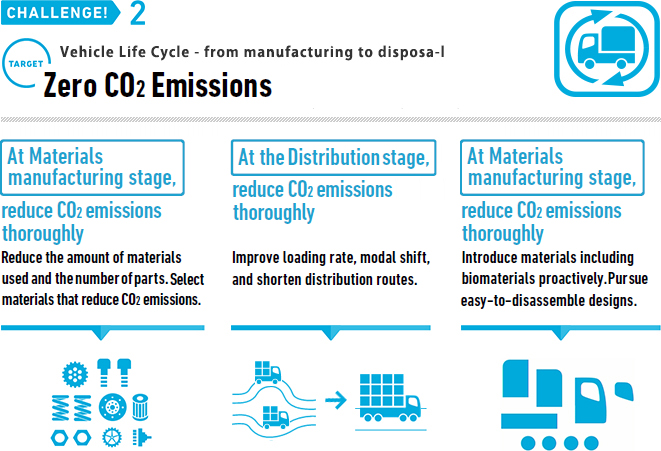
Life Cycle Zero CO2 Emissions Challenge
The Hino Group emits CO2 gas, one of the causes of global warming, not only when its products such as trucks and buses are operated and when manufacturing vehicles in its plants, but in all product life cycle fields, from material manufacturing to disposal and recycling.
The Hino Group will completely reduce the environmental impact of the entire supply chain and help combat global warming by pursuing zero CO2 emissions in these fields.
Vehicle Life Cycle

Material manufacturing field

Hino Motors will reduce the amount of materials used and the number of parts to reduce CO2 at the time of material manufacturing.
The Company will select materials that reduce CO2 emissions in the product
development stage, such as by actively promoting the development of plastic parts to reduce CO2 emissions during parts manufacturing.
Distribution field
The Company will thoroughly reduce CO2 emissions, even at the distribution stage, which links together each step of the product life cycle.
As a commercial vehicle manufacturer, not only rigorously working to spread next-generation and fuel-efficient vehicles in commercial vehicles that assist in the movement of goods, Hino Motors also collaborates with logistics service providers to increase loading ratios, conduct a modal shift, and shorten distribution routes.
In the medium to long term, Hino Motors will participate in comprehensive measures in the road transport sector in collaboration with the government. These measures include traffic flow countermeasures such as expressway improvement and traffic signal countermeasures and the deregulation of vehicle height and total trailer length.
Initiatives as a commercial vehicle manufacturer
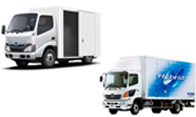
Initiatives as a shipper
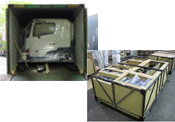
Comprehensive measures for the transportation sector
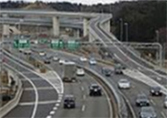
Disposal/Recycling field

Hino Motors will proactively introduce materials including biomaterials and recycled materials that help reduce CO2 emissions at the time of vehicle disposal and recycling.
In parallel with efforts related to the introduction of these materials, Hino Motors is targeting products that are easy to disassemble and recycle, and the Company is pursuing easy-to-disassemble designs while collaborating with professional dismantlers in everything, all the while listening to their needs.
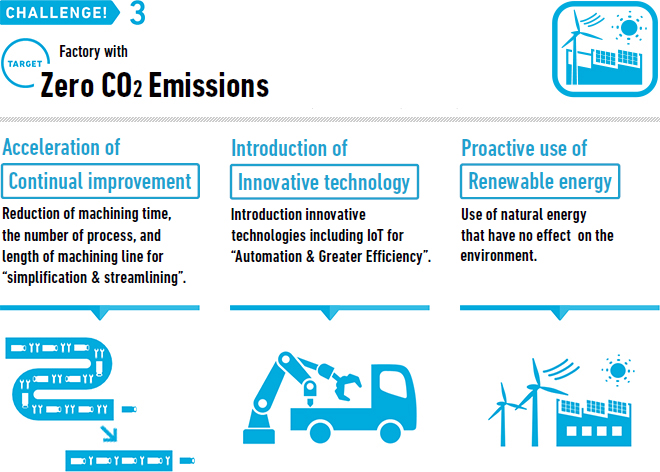
Factory Zero CO2 Emissions Challenge
Because CO2 is emitted from each business site when products are produced, this effort to reduce CO2 in the factories is essential to mitigate global warming.
In addition to pursuing continual improvement and introducing innovative technologies at production sites, the Hino Group will concurrently promote the active use of renewable energy while striving to attain the high target of “zero factory CO2 emissions″.
Continual improvement
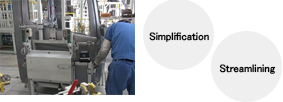
Hino Motors will accelerate continual improvements that are being taken at production sites, reducion of machining time, completely eradicate overburden, waste and inconsistency dormant in each process, and promote simplification and streamlining by reducion the machining time, the number of processes, and length of the machining line.
Introduction of innovative technologies
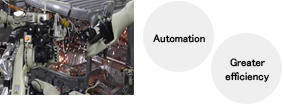
Hino Motors will take steps to automate production while rigorously pursuing greater efficiency by actively introducing innovative technologies including IoT at production sites to further reduce CO2 emissions in each process.
Proactive use of renewable energy
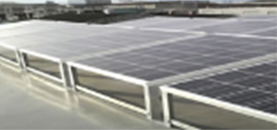
The Hino Group has introduced renewable energy such as solar power, mainly at production sites.
Hino Motors will seek to fully use environmentally friendly energy by further accelerating the pace of its introduction and ensuring that the energy used in each process is covered by renewable energy.
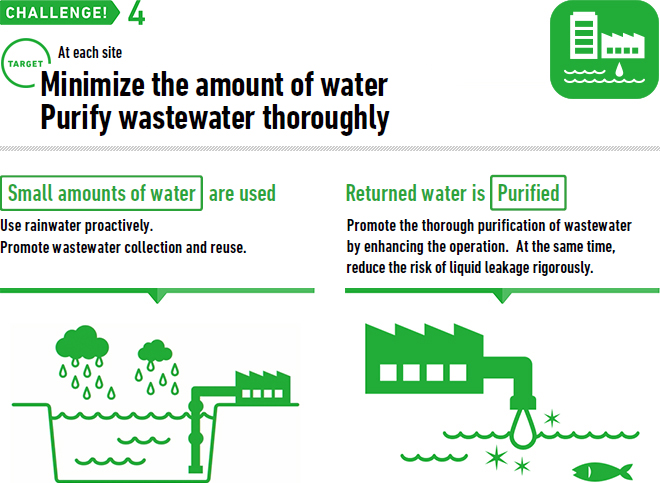
Challenge of Minimizing and Optimizing Water Usage
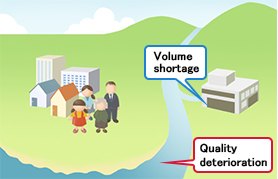
Today, when about 1.2 billion people, or 20% of the world’s population, are unable to use water resources (according to the Ministry of the Environment’s website), and it is thought that such shortages will grow even further due to forecasted population increases.
Hino Motors will work to reduce water use while promoting the purification of wastewater when it naturally returns from each business site, and work with the local community on water resource issues.
Volume: Small amounts of water are used

To reduce the amount of factory water that account for much of usage of water resouces, The Hino Group will thoroughly promote wastewater collection and reuse.
To proactively use rainwater, the Company has set up a storage pit within the premises with the aim of further reducing the amount of new industrial water input.
Moreover, to reduce water for daily use, it will thoroughly implement measures (water-saving dishwashers, water-saving packing, etc.) to be used in facilities including cafeterias, toilets, and hand-wash stations.
Quality: Returned water is purified

The Hino Group promotes the thorough purification of wastewater by enhancing the operation of wastewater treatment plants and wastewater purification facilities at each site based on strict standards.
At the same time, the Company will strive to prevent wastewater quality deterioration by rigorously reducing the risk of liquid leakage.
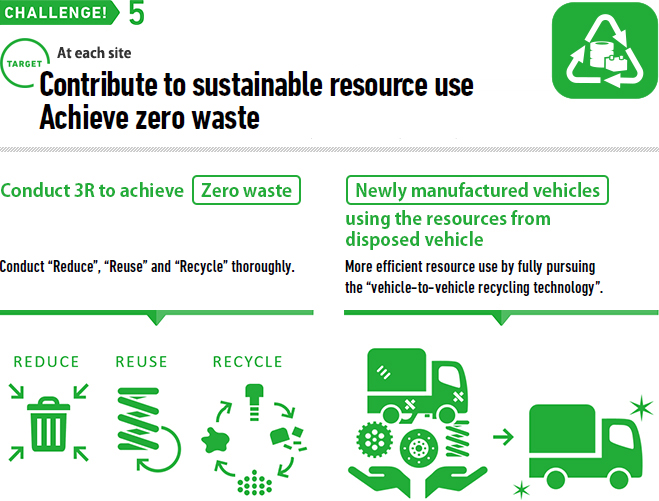
Challenge of Achieving Zero Waste
The world’s population is increasing and the risk of resource depletion on the back of economic development is rising. Furthermore, waste that has become a by-product of a mass consumer society continues to increase, and if things continue at this pace it cannot be properly disposed of and will lead to serious environmental pollution.
The Hino Group has set the high target of “zero waste,” and in parallel with efforts to reduce waste, the Group will take steps to prevent environmental pollution by improving resource utilization efficiency.
Waste reduction

To reduce the waste discharged in manufacturing a vehicle, Hino Motors cooperates with Group companies and business partners in “volume reduction,” “reusing,” and “recycling” based on the 3Rs (Reduce, Reuse, and Recycle) to reduce waste as much as possible.
More efficient resource use

Components such as batteries and motors contain natural resources including rare metals and other precious metals.
The Hino Group retrieves as many resources as possible from disposed vehicles, including the above-mentioned natural resources, and rigorously reduces the amount of new resource inputs by fully pursuing the “vehicle-to-vehicle recycling technologies” that are utilized in newly manufactured vehicles.
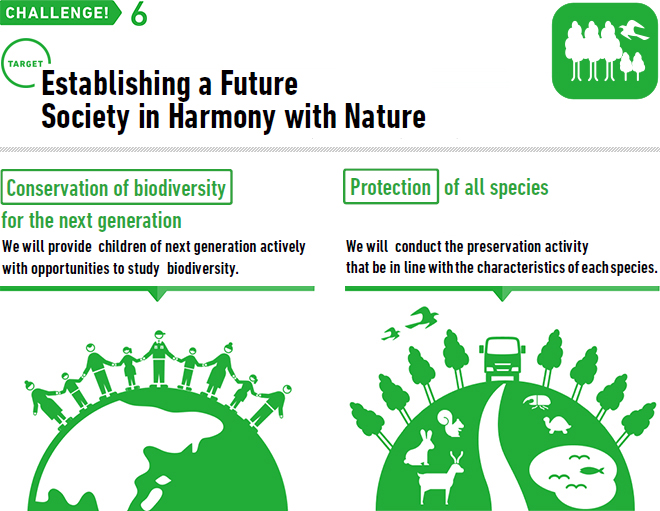
Challenge of Minimizing the Impact on Biodiversity
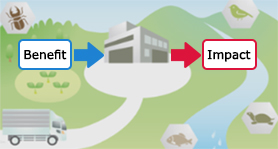
In recent years, biodiversity is rapidly disappearing around the world. Taking the speed of extinction of wild animals and plants as an example, it is said that one species becomes extinct every seven minutes (according to the Ministry of the Environment’s website).
The Hino Group receives immeasurable benefits from this biodiversity, while at the same time developing its influential business.
We will reduce as much as possible the impact that the Hino Group’s business has on biodiversity and take on the challenge of creating a future where people and nature coexist in harmony.
Reduce impact on local community: Protect biodiversity

The Hino Group will protect distinctive regional biodiversity in line with those characteristics by preserving rare and native animals and plants and eliminate non-native species.
In addition, Hino Motors will contribute to ecosystem continuity in each area around its businesses and to the creation of an ecosystem network by proactively planting trees and developing the biotope after considering regional characteristics.
Reduce future impact: Community development and networking

Because the preservation of biodiversity is a problem that is not limited to the present and requires a long-term perspective, Hino motors will proactively conduct biodiversity education and hold related events to gain interest within that of local children, who will be the next generation’s leaders.
And it must build a system that addresses the entire region according to local characteristics through interaction with local communities, governments, and related organizations, along with collaboration and the promotion of subsidies for biodiversity-related activities in surrounding areas.
Under the corporate mission "to make the world a better place to live by helping people and goods get to where they need to go—safely, economically and with environmental responsibility—while focusing on sustainable development," the Hino Group has supported customers’ businesses and contributed to society.
In the future, the Hino Group will take on thoroughly reducing the environmental impact as new challenges based on the “Hino Environmental Challenge 2050”.
Aiming to bring a smile to the faces of children 50 to 100 years from now, Hino Motors will continue to race ahead with the goal of becoming a company that is in harmony with the environment and grows together with society.

